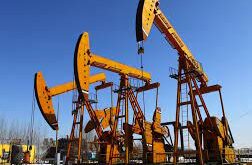Nothing right now is stopping a surge in oil tanker rates that’s given owners of the vessels one of the biggest boosts in years.
Rates have rallied so high that a secondhand supertanker could theoretically pay for itself in a couple of voyages. according to estimates from Clarkson Platou Securities AS. A normal payback period would often be about a decade. The combined market value of Frontline Ltd. and Euronav NV — two pureplay owners — has gained by 78% to $4.8 billion since mid-August.
Multiple forces. most of them geopolitical. are driving the rally in vessel earnings that reached a record on Friday. Probably the most important bull factor was U.S. sanctions on two units of a Chinese shipping company in September. placing a part of its fleet of oil carriers off-limits for traders. That fired up a freight market that had already gained due to increased Middle East tensions this year.
This is an exciting dynamic that could create the foundation for a steady improvement in rates and a sustainable period of out-sized cash generation. said Robert Hvide Macleod. the chief executive officer of Frontline’s management company. Given the geopolitical climate. we wouldn’t be surprised to see episodic periods where rates spike in the future as well.
Daily rates for so-called very large crude carriers to ship oil to China from the Persian Gulf soared by 90% to $300.391 a day at the end of last week. according to data from the Baltic Exchange in London. Those same vessels. which can carry 2 MMbbl of crude. were earning $25.000 a day just a month ago.
The latest surge began in late September following the Trump administration’s sanctions on units of China COSCO Shipping Corp.. the world’s largest merchant vessel owner. Traders were unclear about exactly which tankers were affected. making them wary of booking COSCO carriers even though only a unit was impacted.
Red Sea Incident. The latest lift came from another moment of tension in the Middle East. Iran said on Friday that missiles hit one of the country’s ships in the Red Sea. The incident comes less than a month after an unprecedented attack on Saudi Arabia’s oil industry. which prompted traders to rush for crude supplies from elsewhere.
Earnings for ships on the benchmark Persian Gulf-China route began to pass the $100.000-a-day mark — already a very high level by historic standards — early last week. On Friday. the VLCC Ardeche. was booked for a journey in early November from the Middle East to Singapore at a rate equating to $327.853. excluding idle days. according to a fixture report listed by shipping pool Tankers International.
New Thing. It’s important to remember that rates were trending higher and well above our breakeven levels before the sanctions on COSCO added fuel to the fire. Macleod said. “The fundamentals were in place due to U.S. exports. falling vessel deliveries. the highest refinery growth in 40 years. and healthy oil demand.
In addition to that. hundreds of tankers are to be fitted with equipment to help them to meet International Maritime Organization sulfur-emissions rules that come into effect from January. Reports of some shippers shunning vessels that have called at Venezuelan ports in the past 12 months also played a part.
Most people in the market haven’t seen this kind of market movement. Jonathan Lee. chief executive officer at Tankers International. said of the rates rally. It’s a unique situation but I think you’ve got to put this into perspective. What this is. is a cumulative effect of many things.
The rush to secure vessels to ship oil in the market continues. according to Clarksons Platou.
At current rates. owners could pay back a 10-year-old VLCC. valued at $47m including scrap value of $16m. after only two trips. Clarksons Platou analysts including Frode Morkedal said in a research note Monday. Even at half the current VLCC rate. most owners have an earnings yield of above 75% and could thus earn back their entire market cap within a year.
Frontline. controlled by the Norwegian-born billionaire John Fredriksen. in August agreed to buy 10 Suezmax crude oil tankers built in 2019 from Trafigura Pte Ltd. for as much as $675 million in cash and shares.
There are some signs of oil-market stress from the surge in rates. Refining margins are being eroded. according to data from Oil Analytics Ltd. That means crude exporters will either need to discount their barrels to make it profitable for refineries to process them. or prices of fuel will need to climb.
Frontline’s Macleod says freight rates will settle in at significantly higher levels than seen earlier in the year as demand for vessels is exceeding supply.
U.S. exports are leading to higher ton-mile demand. effective fleet supply will be reduced through the first half of next year as maintenance-driven off-hire increases. he said. And most importantly fleet growth will not be as dramatic as in years past.
 Iran Energy News Oil, Gas, Petrochemical and Energy Field Specialized Channel
Iran Energy News Oil, Gas, Petrochemical and Energy Field Specialized Channel




